Ceiling solutions refer to the various types of ceiling systems and designs used in buildings to enhance functionality, aesthetics, acoustics, and energy efficiency. These solutions can address various needs such as soundproofing, fire resistance, insulation, and lighting integration. Here are some common types of ceiling solutions:
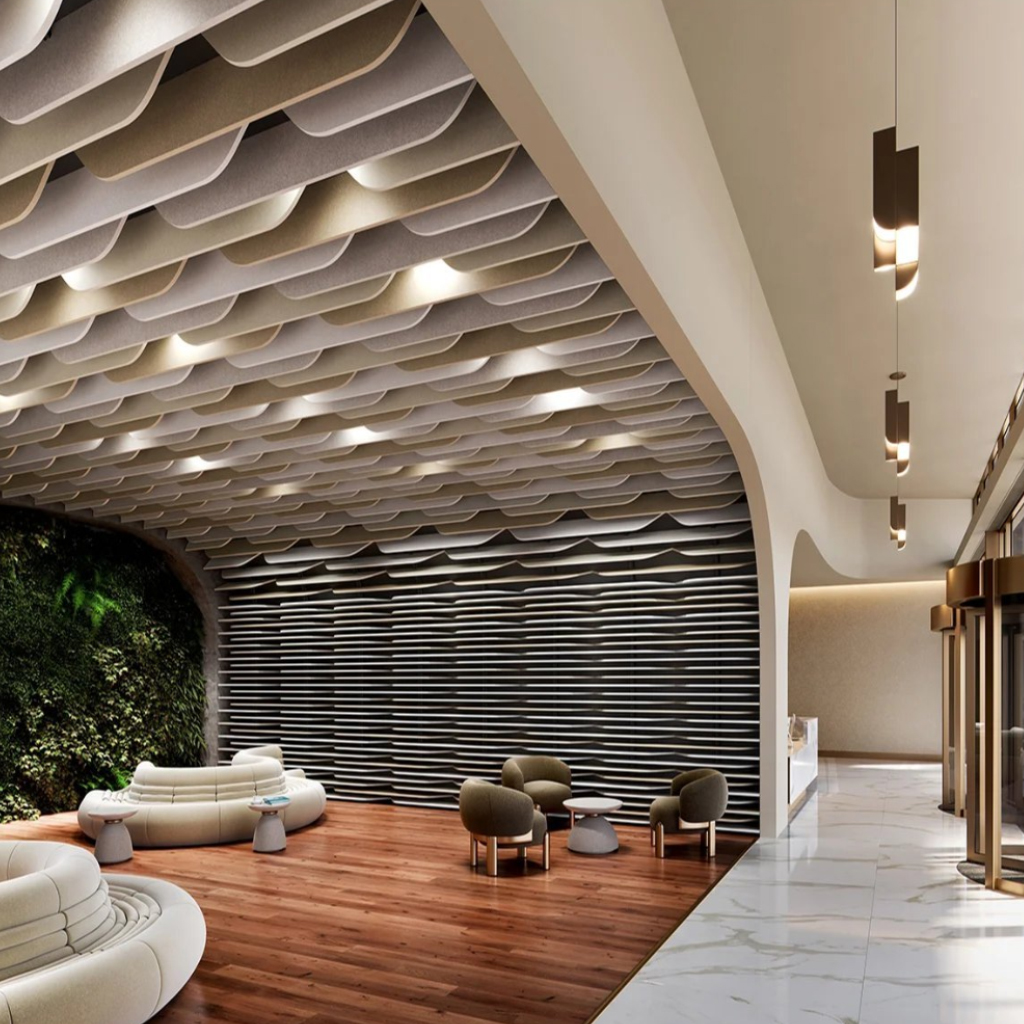
Suspended (Drop) Ceilings
- Description: A grid system where ceiling tiles or panels are placed into a metal framework, creating a "dropped" ceiling below the actual ceiling.
- Applications: Often used in offices, schools, and commercial spaces to hide utilities like ductwork, wiring, and pipes.
- Benefits
- Easy access to electrical or HVAC systems.
- Can include acoustic tiles for noise reduction.
- Cost-effective and versatile
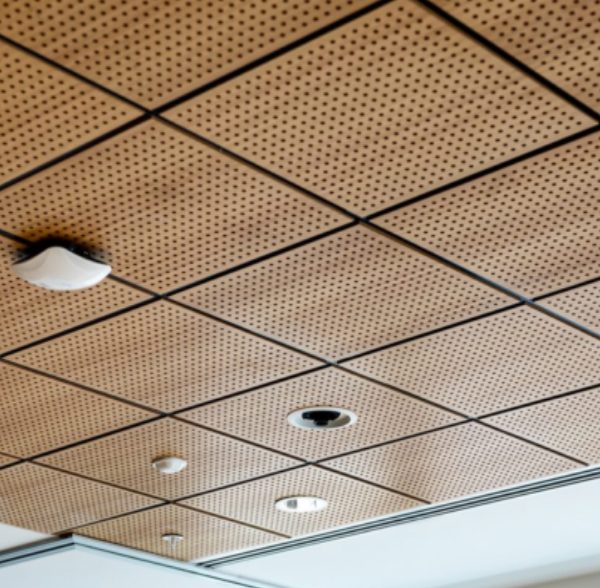
Acoustic Ceilings
- Description: Special ceiling tiles designed to absorb sound and reduce noise within a room.
- Applications: Recording studios, offices, classrooms, and other environments where sound control is essential.
- Benefits
- Improves sound quality by reducing echo and reverberation.
- Can be combined with suspended ceilings or used in standalone designs.
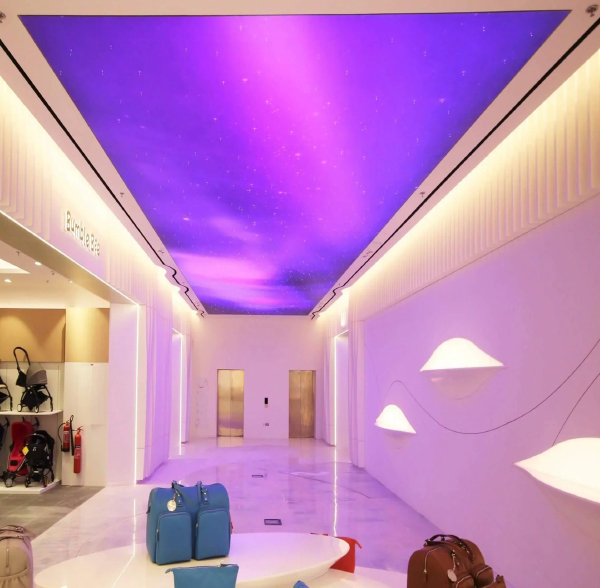
Stretch Ceilings
- Description: A modern solution where a lightweight PVC membrane is stretched and fixed to the perimeter of the room, creating a smooth or reflective surface.
- Applications: Contemporary interior designs in homes, retail spaces, and high-end commercial buildings.
- Benefits
- Highly customizable in terms of colors, finishes (matte, satin, glossy), and even lighting integration.
- Can hide imperfections in the ceiling structure.
- Moisture-resistant, making it ideal for bathrooms or humid environments.
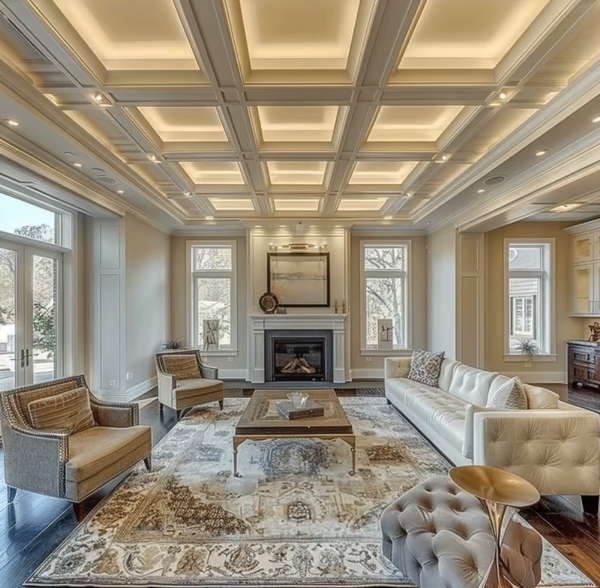
Coffered Ceilings
- Description: A series of recessed panels, usually square or rectangular, built into the ceiling, creating a grid-like pattern.
- Applications: Luxury homes, dining rooms, offices, and other high-end spaces.
- Benefits
- Adds architectural depth and a sense of grandeur to a room.
- Can be used to enhance lighting or acoustics when combined with additional elements.
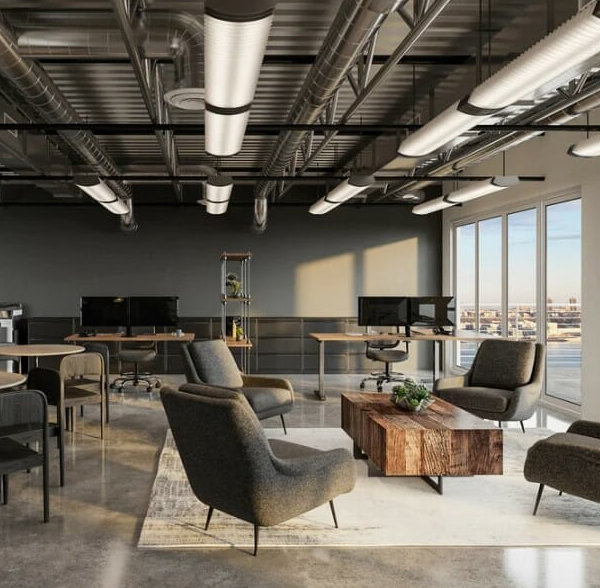
Exposed Ceilings
- Description: In this design, the building's structural components like beams, ductwork, and pipes are left exposed, often painted for an industrial look.
- Applications: Lofts, industrial-style offices, and modern commercial spaces.
- Benefits
- Provides a spacious and open feel.
- Saves costs on additional ceiling materials.
- Offers an urban, contemporary aesthetic.
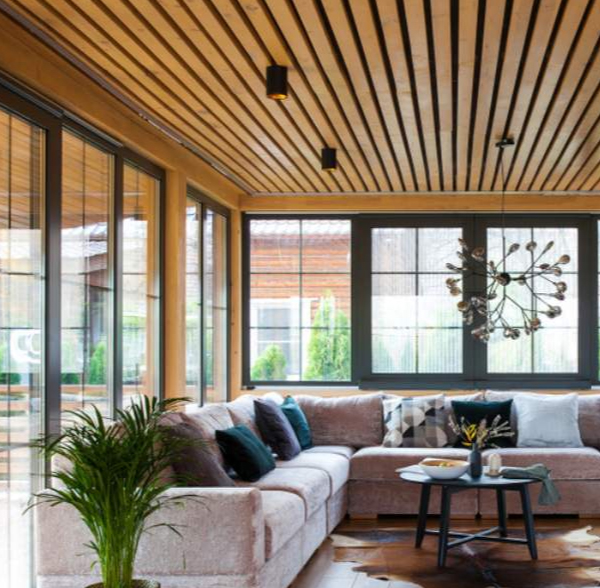
Wooden Ceilings
- Description: Ceilings made from wooden planks, panels, or beams, offering a warm, natural look.
- Applications: Homes, lodges, restaurants, and hospitality venues.
- Benefits
- Aesthetic appeal of natural wood.
- Can help with sound absorption when properly treated.
- Enhances insulation properties in a room.
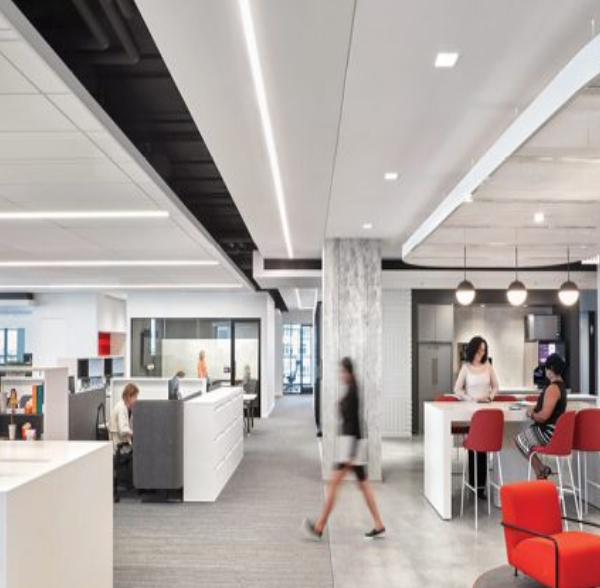
Integrated Ceiling Systems
- Description: Ceiling systems that incorporate various functions such as lighting, HVAC, soundproofing, and fire safety into one unified design.
- Applications: Modern commercial offices, hospitals, and large public buildings.
- Benefits
- Provides a sleek and organized appearance.
- Enhances energy efficiency by integrating lighting and HVAC systems.
- Streamlines building maintenance and system upgrades.
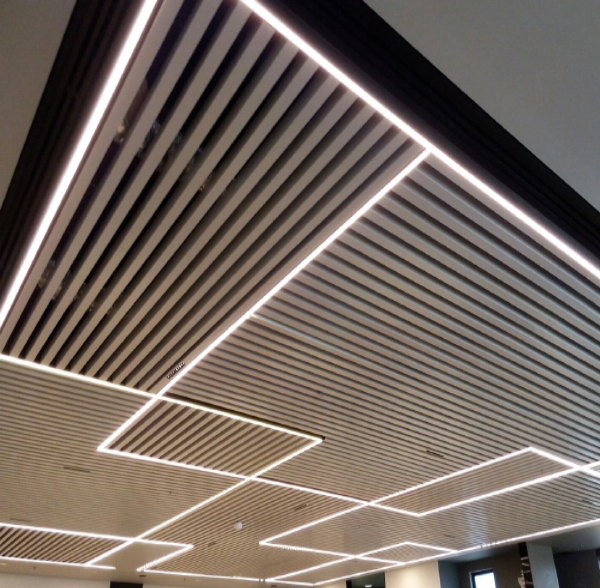
Metal Ceilings
- Description: Ceilings made from metal panels, usually aluminum or steel, which can be perforated for improved acoustics.
- Applications: Commercial buildings, transportation hubs, or high-tech environments.
- Benefits
- Durable and easy to clean.
- Fire-resistant and moisture-resistant.
- Can be customized with different finishes for a modern look.
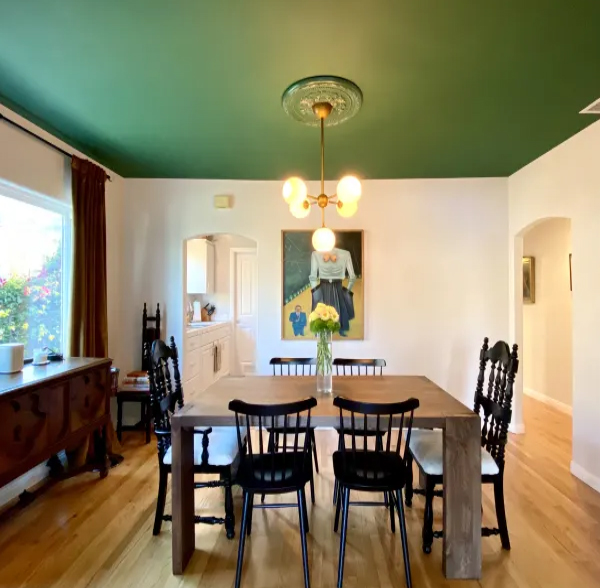
Green Ceilings (Living Ceilings)
- Description: A growing trend where plants or greenery are incorporated into the ceiling design to promote biophilic design.
- Applications: Modern offices, eco-friendly homes, restaurants, and hospitality venues.
- Benefits
- Enhances indoor air quality.
- Creates a calming and natural environment.
- Promotes sustainability and wellness.
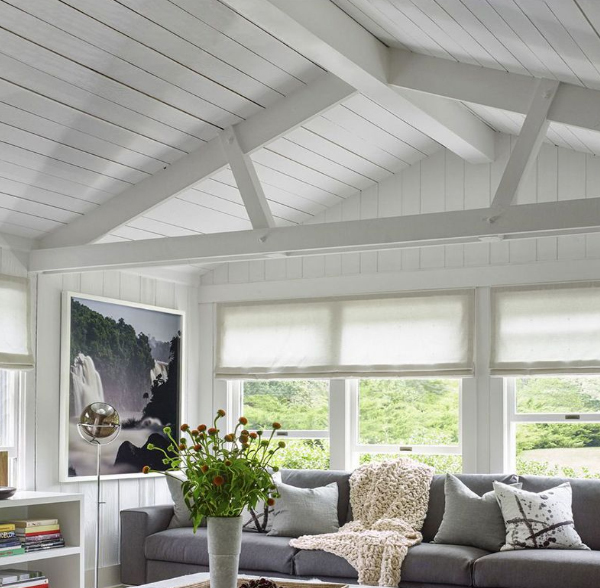
Vaulted and Cathedral Ceilings
- Description:Vaulted ceilings are arched and rise higher than the standard ceiling height, often creating a spacious, open feeling. Cathedral ceilings are symmetrical and have two sloping sides that meet at a central ridge.
- Applications: Churches, large living rooms, great rooms, and public spaces.
- Benefits
- Adds character and warmth to a room.
- Can combine with other materials like drywall or metal for a unique design.
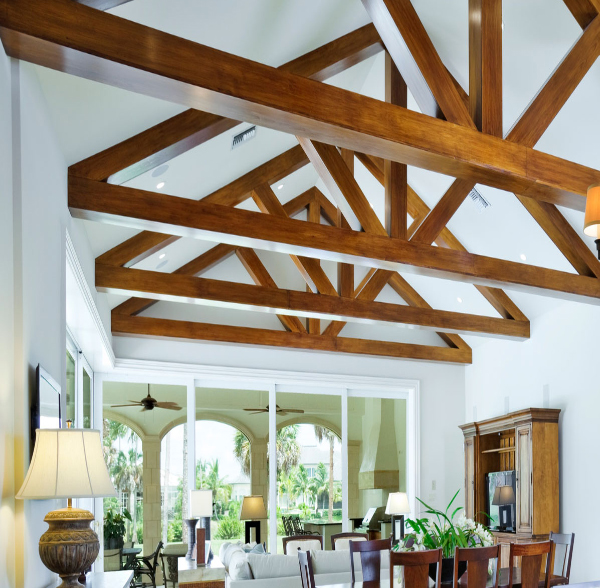
Beam Ceilings
- Description:Exposed wooden or metal beams are part of the ceiling design, adding a rustic or industrial look.
- Applications: Farmhouses, lodges, rustic homes, and certain commercial spaces.
- Benefits
- Adds character and warmth to a room.
- Can combine with other materials like drywall or metal for a unique design.
Considerations When Choosing Ceiling Solutions:
- Aesthetics: The ceiling design should complement the overall interior decor.
- Acoustics: Consider acoustic panels or other sound-absorbing materials if noise reduction is a priority.
- Maintenance: Certain ceilings, like suspended ceilings, allow easy access to electrical or HVAC systems for maintenance.
- Budget: Some ceiling solutions, like coffered or stretch ceilings, can be more expensive than others.
- Functionality: Consider if the ceiling needs to accommodate lighting, HVAC systems, or other utilities.
Ceiling solutions play a crucial role in enhancing a space's visual appeal, acoustic comfort, and overall functionality. By choosing the right solution, you can create an environment that not only looks great but also meets the specific needs of the space.